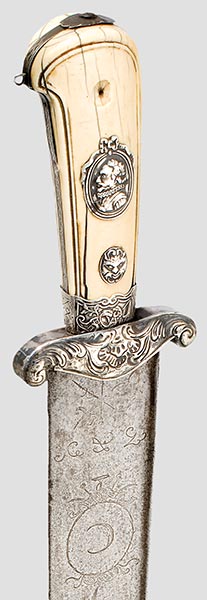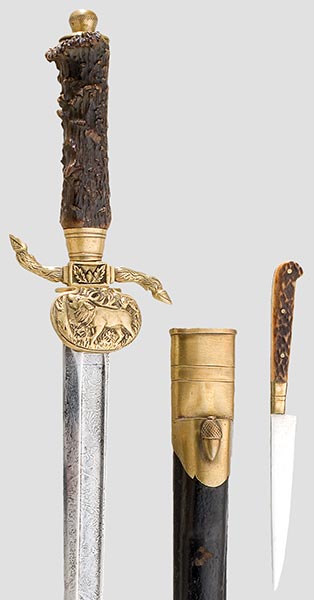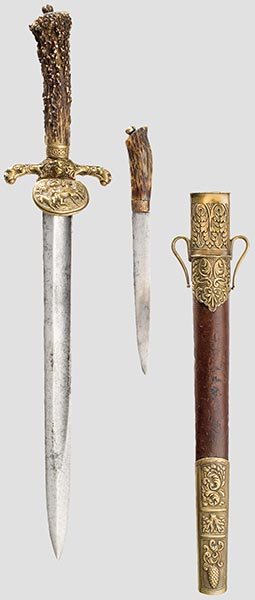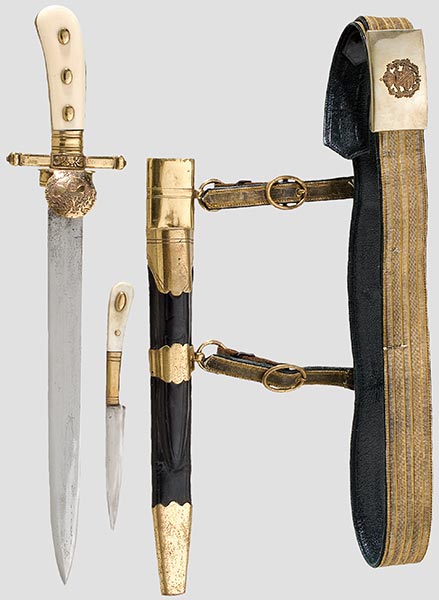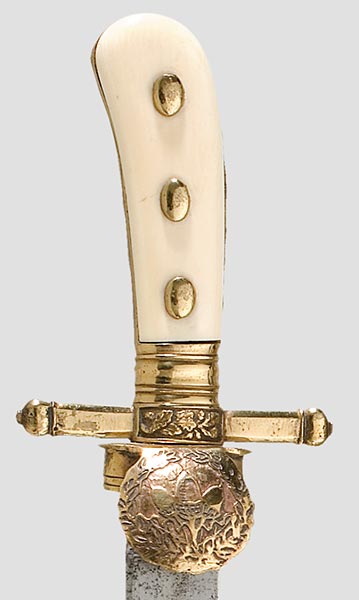Posts: 1,973 Location: Nipmuc USA
Tue 02 Dec, 2008 5:20 am
Hi Greg,
It can be extremely difficult to narrow an item to within more than a few decades. I would point to the first link I offered to look at some general traits. Without specific traits, nearly impossible to date an item within a matter of months or even years. The last photos that Sean posted are of a decorative and a later period, yet some of the flows are quite similar. In my initial post, I mentioned the blade traits and is what most put me to the last half of the 18th century and probably closer to 1800. Again, I would bow to expertise in the matter as I am not a collector or grand scholar of the form.
I am actually loath to put up a blade that supports my feelings, as it is an item I watch for sale. My assertion for the timing of that one has nothing to do with the seller's description. The wedge crossection of the blade, it's length and general form are what put me in the last decades of the 18th century. While not using the scabbard fittings to direct my thoughts on timeline, the sheet metal fittings and form of that also lend me to consider those years. It could well be some decades later than that but my fellings are that it is not significantly later than the early 19th century.
Many swords have been "in the style of" a given look and I can only assume that is what Bruno is trying to say. Many stylings have gone 'round and 'round time and again.
I would leave my thoughts regarding this paragraph from elesewhere and that study also relates to my interest in other alloys (such as Britannia) used by 18th and 19th century cutlery.
The family of Nickel Silver alloys has been known since the early 18th century and were initially developed in the far east. European traders brought back metalware goods which were described using the Indian word Tutenag or the Chinese word Paktong. This new alloy with its properties of strength, relatively easy working and silvery colour began to be used for a range of consumer goods, but it was not until the 1840s that the alloy was developed in its modern formulation. By then firms such as Elkington in England and Berndorf in Austria were looking for a stable, cheap, silverish metal as a substrate for the new process of electroplating. Hence EPNS was born, and its German equivalent Alpacca. Argentum and Electrum were other tradenames for electroplate.
Now, a scientific study of your sword might determine exactly what the alloy of the fittings was but it would still not nail it down precisely.
I would simply enjoy and continue studying the item. I have swords I cannot date to within years. It is easier if there are dated marks or a specific maker's catalog. There is a Geman Messer forum out there that Bruno probably has listed somewhere. My German is not terrific but there may be a fount of information on some other boards. Another board that has some visitors that specialize not just in Germania but also these hunting swords is the Bernard Levine subsection of
http://www.bladeforums.com/forums/
Cheers
GC
.







